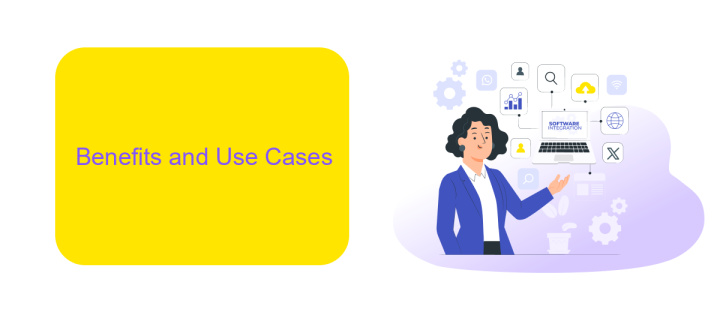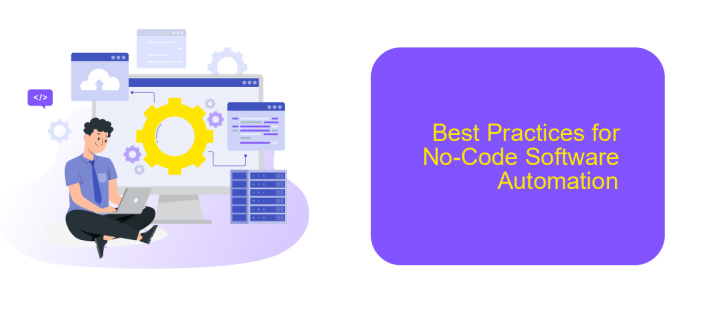No-Code Software Automation
In today's fast-paced digital landscape, No-Code Software Automation is revolutionizing the way businesses operate. By enabling users to create and deploy applications without writing a single line of code, this technology democratizes software development. It empowers professionals across various industries to streamline workflows, enhance productivity, and drive innovation, all while significantly reducing time and costs associated with traditional coding.
Introduction to No-Code Software Automation
No-code software automation is revolutionizing the way businesses operate by enabling users to create automated workflows without any programming skills. This approach empowers non-technical users to streamline processes, reduce manual tasks, and improve efficiency.
- Ease of use: No-code platforms offer intuitive drag-and-drop interfaces.
- Cost-effective: Reduces the need for expensive developer resources.
- Flexibility: Easily adaptable to changing business needs.
- Speed: Accelerates the development and deployment of automation solutions.
One popular tool in the no-code automation space is ApiX-Drive, which allows users to integrate various applications and services seamlessly. With ApiX-Drive, businesses can automate data transfers, synchronize information between platforms, and create complex workflows without writing a single line of code. This makes it an invaluable resource for organizations looking to enhance productivity and streamline operations.
Benefits and Use Cases

No-Code Software Automation offers numerous benefits, including increased efficiency, reduced costs, and enhanced accessibility. By enabling users without programming skills to create and deploy automated workflows, businesses can save time and resources. This democratization of technology allows teams to focus on strategic tasks rather than getting bogged down by repetitive processes. Additionally, no-code platforms often come with pre-built templates and drag-and-drop interfaces, making it easier to implement solutions quickly.
One of the most compelling use cases for no-code automation is in the realm of integrations. For instance, services like ApiX-Drive make it simple to connect various applications and automate data transfers between them. This is particularly beneficial for businesses that rely on multiple software tools for their operations. By automating these integrations, companies can ensure data consistency and streamline workflows, thereby improving overall productivity. Other common use cases include customer relationship management (CRM), marketing automation, and project management, all of which can be significantly enhanced through no-code solutions.
Types of No-Code Automation Tools

No-code automation tools have revolutionized the way businesses streamline their processes without the need for extensive coding knowledge. These tools enable users to automate workflows, integrate applications, and manage data effortlessly.
- Workflow Automation Tools: These tools help in automating repetitive tasks and workflows. Examples include Zapier and Integromat, which allow users to create automated workflows between different apps and services.
- Integration Platforms: Services like ApiX-Drive facilitate seamless integration between various applications, enabling data to flow smoothly across different platforms without manual intervention.
- Bot Builders: Tools such as Chatfuel and ManyChat enable the creation of chatbots without coding, helping businesses automate customer interactions and support.
- Data Management Tools: No-code platforms like Airtable and Google Sheets empower users to manage and automate data-related tasks, such as data entry and reporting.
These no-code automation tools democratize technology, allowing non-developers to build and manage complex systems efficiently. By leveraging such tools, businesses can save time, reduce errors, and enhance productivity without the need for specialized technical skills.
Best Practices for No-Code Software Automation

No-code software automation is transforming the way businesses operate by enabling non-technical users to create and manage workflows. To maximize the benefits of no-code tools, it's essential to follow best practices that ensure efficiency and scalability.
First, clearly define your automation goals. Knowing what you want to achieve will help you choose the right tools and design effective workflows. Additionally, make sure to involve stakeholders from different departments to ensure the solution meets everyone’s needs.
- Start with simple workflows and gradually increase complexity.
- Regularly update and maintain your automation processes.
- Test thoroughly before deploying to avoid disruptions.
- Use tools like ApiX-Drive to streamline integrations between different software applications.
- Document your workflows for future reference and training purposes.
By adhering to these best practices, you can leverage no-code software automation to enhance productivity and streamline operations. Remember to continuously review and optimize your workflows to adapt to changing business needs and technological advancements.
- Automate the work of an online store or landing
- Empower through integration
- Don't spend money on programmers and integrators
- Save time by automating routine tasks
Future of No-Code Software Automation
The future of no-code software automation is incredibly promising, driven by advancements in artificial intelligence and machine learning. As businesses increasingly look for ways to streamline operations and reduce costs, no-code platforms will become essential tools. These platforms will empower non-technical users to create complex workflows and automate tasks without needing to write a single line of code. This democratization of software development will lead to a surge in innovation, as more people can contribute to solving business challenges through automation.
Integration capabilities will also see significant improvements. Services like ApiX-Drive will play a crucial role in this evolution by providing seamless integration solutions that connect various applications and systems effortlessly. With such tools, users can easily set up and manage integrations, ensuring that their automated workflows are both efficient and reliable. As no-code platforms continue to evolve, they will become more intuitive and powerful, enabling businesses of all sizes to harness the full potential of automation.
FAQ
What is No-Code Software Automation?
How can No-Code Software Automation benefit my business?
Is No-Code Software Automation secure?
Can I integrate No-Code Software Automation tools with my existing software?
Do I need technical skills to use No-Code Software Automation tools?
Apix-Drive will help optimize business processes, save you from a lot of routine tasks and unnecessary costs for automation, attracting additional specialists. Try setting up a free test connection with ApiX-Drive and see for yourself. Now you have to think about where to invest the freed time and money!


